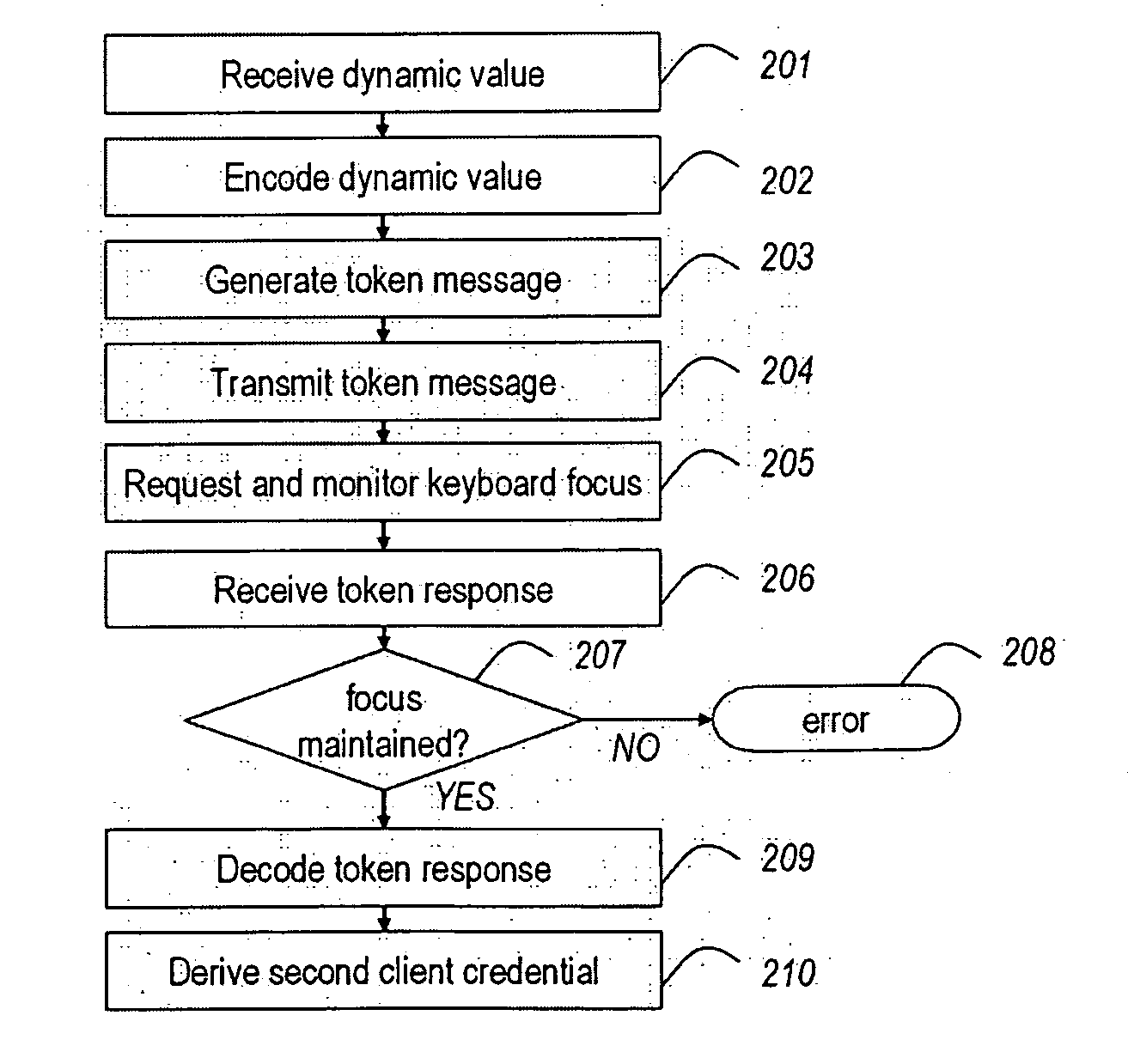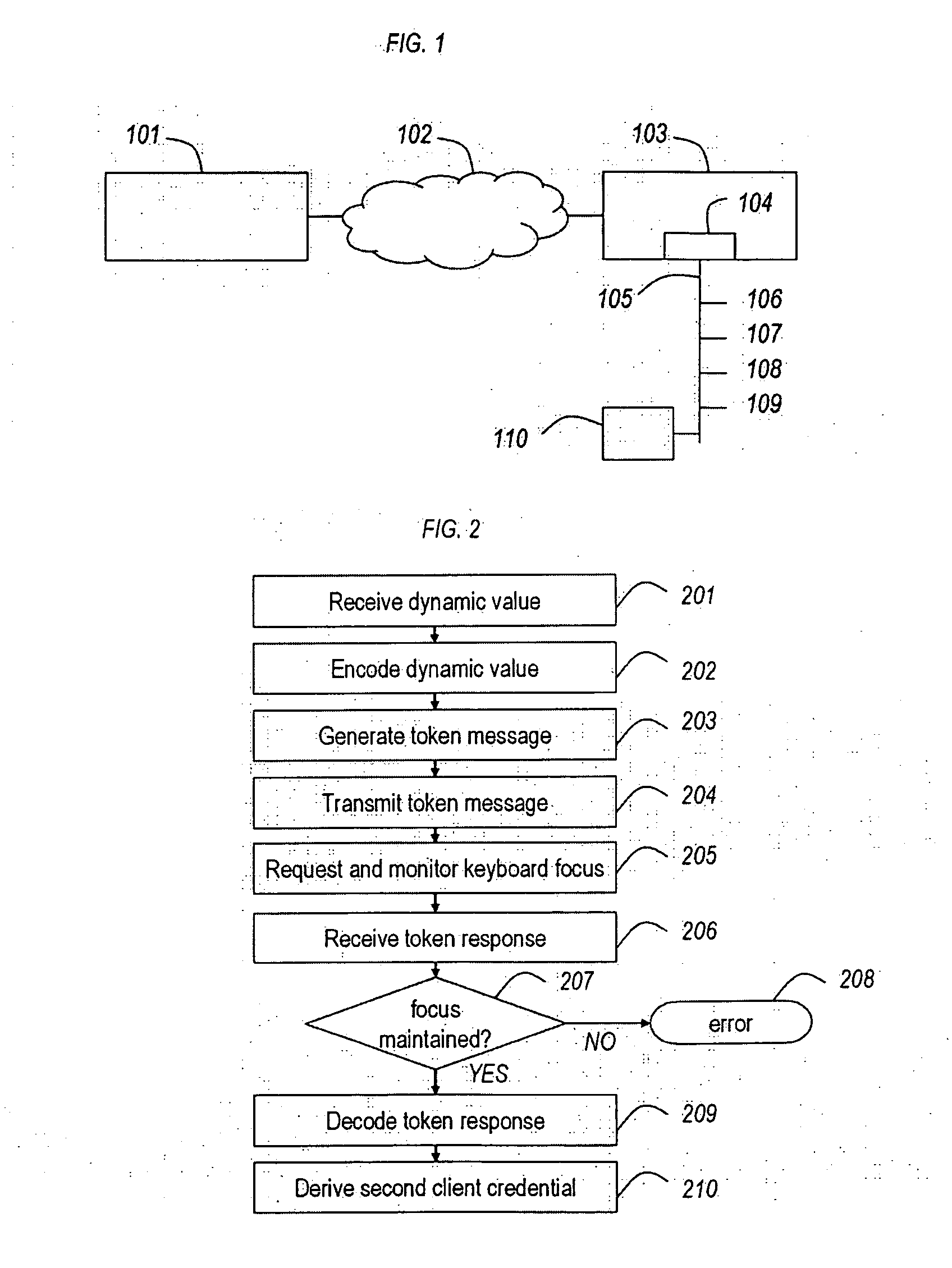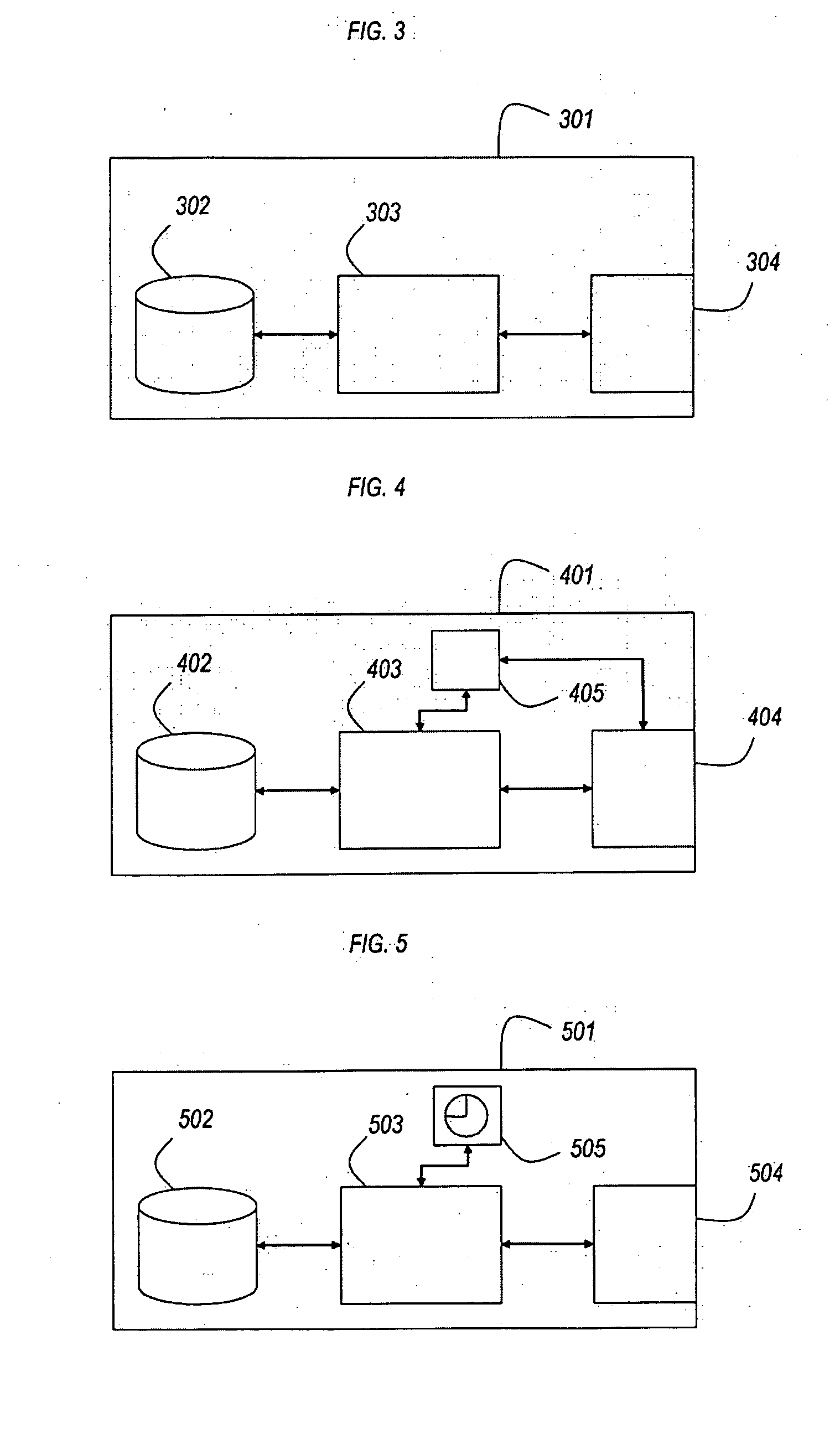Two-factor USB authentication token
a two-factor authentication and token technology, applied in the field of client authentication and transaction signature capabilities using a two-factor usb authentication token, can solve the problems of requiring more advanced security technology, certain minimum size and volume, and insufficient static passwords, so as to improve the level of security delivered, cost-effective, and low cost
- Summary
- Abstract
- Description
- Claims
- Application Information
AI Technical Summary
Benefits of technology
Problems solved by technology
Method used
Image
Examples
Embodiment Construction
[0045]The preferred embodiment of the present invention consists of an authentication and signature hardware device with the following features:[0046]it has the form factor of a small USB stick;[0047]it is equipped with a USB interface so that it can be plugged into the USB port of a host computer;[0048]it has a microprocessor capable of symmetric cryptography;[0049]it is personalized with at least one secret symmetric key;[0050]it presents itself to the host computer as a USB Human Interface Device (HID);[0051]it communicates with the host computer and receives electrical power via the USB interface;[0052]it relies on the host computer for any interface with the user;
[0053]The preferred embodiment will be detailed with reference to FIG. 1, where relevant, and will be referred to as USB token 110. Where mention is made of the internals of USB token 110, these will be detailed with reference to other figures, where relevant. To clarify the functions of USB token 110, the following us...
PUM
 Login to View More
Login to View More Abstract
Description
Claims
Application Information
 Login to View More
Login to View More - R&D
- Intellectual Property
- Life Sciences
- Materials
- Tech Scout
- Unparalleled Data Quality
- Higher Quality Content
- 60% Fewer Hallucinations
Browse by: Latest US Patents, China's latest patents, Technical Efficacy Thesaurus, Application Domain, Technology Topic, Popular Technical Reports.
© 2025 PatSnap. All rights reserved.Legal|Privacy policy|Modern Slavery Act Transparency Statement|Sitemap|About US| Contact US: help@patsnap.com



